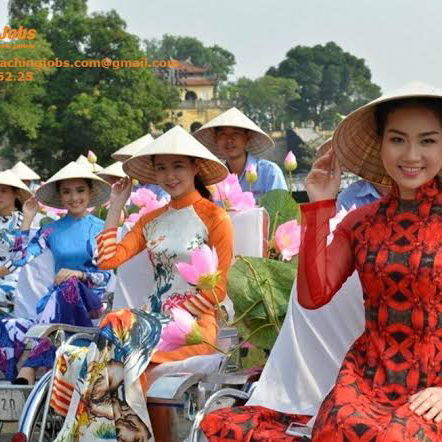Vietnamese

Identification. The Vietnamese speak the Vietnamese language and live in the Socialist Republic of Vietnam. Significant numbers of Vietnamese, especially since 1975, are now found in most Western countries, including the United States, France, Australia, and Canada. Remnants of earlier Vietnamese migrations still exist in northeastern Thailand and New Caledonia. Many Vietnamese have also lived in Cambodia and Laos for many decades. Under French colonial rule Vietnam was divided into three separate political entities: Tonkin (north Vietnam), Annam (central Vietnam), and Cochinchina (south Vietnam). Foreigners have sometimes used these terms as designators of ethnicity (e.g., the "Tonkinese"), sometimes employing the term "Annamese" to include all Vietnamese. This usage is offensive to Vietnamese, who all refer to themselves as "Vietnamese," sometimes using "northern," "central," or "southern" as adjectives to designate region of origin. Ethnic Vietnamese also refer to themselves as kinh, meaning "lowlanders," as opposed to highland "tribespeople."Location. Vietnam is located between 8°30′ and 23° N and between 102° and 109° E. Very narrow and elongated in the center, it is wider in the south and in the north. The country lies to the south of China and east of Laos and Cambodia, with a long coastline on the South China Sea. Although some three-quarters of Vietnamese national territory is hilly or mountainous, ethnic Vietnamese have lived mainly in the lowland plains.
Demography. The population of Vietnam is about 68.5 million, over 20 percent of whom live in urban areas. Population density is over 207 per square kilometer. About 85 percent of the total population is ethnic Vietnamese. There are many highland ethnic minorities, including numerous Tai-speaking groups as well as Hmong (Meo), Nung, and Muong in the northern highlands and Austronesian-speaking groups (e.g., Rhadé and Jarai) and Mon-Khmer (Austroasiatic)-speaking groups (e.g., Bahnar, Sedang, Stieng, Mnong, and Katu) in the southern highlands. A sizable and long-established ethnic Chinese population lives mostly in urban areas of the south, although many left the country between 1975 and 1980. Many ethnic Khmer live in parts of the Mekong Delta. The Red River and Mekong deltas, containing less than a quarter of the total land area, hold almost 60 percent of the population and over 70 percent of all ethnic Vietnamese. Population density in these core areas is often very high (over 2,000 persons per square mile), but in highland areas it is often under 25 per square mile and rarely exceeds 150 per square mile. Both the southern and the northern regimes during the division of Vietnam (1955-1975), as well as more recently the Socialist Republic of Vietnam, had programs to resettle Vietnamese into the highlands, but they encountered numerous difficulties and achieved only limited results.
Linguistic Affiliation. Vietnamese is a monosyllabic and tonal language of composite origin, basically Mon-Khmer (Austroasiatic), but with elements derived from Tai and Sinitic languages.
Bibliography
Gourou, Pierre (1936). Les paysans du delta tonkinois. Paris: Ecole Française d'Extrême-Orient. Translated as Peasants of the Tonkin Delta. 1955. New Haven: Human Relations Area Files.
Hickey, Gerald C. (1964). Village in Vietnam. Chicago: Aldine.
Hy Van Luong (1989). "Vietnamese Kinship: Structural Principles and the Socialist Transformation in Northern Vietnam." Journal of Asian Studies 48:741-756.
Le Thi Que (1986). "The Vietnamese Family Yesterday and Today." Interculture 92:1-38.
Rambo, Arthur Terry (1973). A Comparison of Feasant Social Systems of Northern and Southern Viet-nam: A Study of Ecological Adaptation, Social Succession, and Cultural Evolution. Monograph Series, no. 3. Carbondale: Southern Illinois University Center for Vietnamese Studies.
Rambo, Arthur Terry (1982). "Vietnam: Searching for Integration." In Religion and Societies: Asia and the Middle East, edited by Carlo Caldarola, 407-444.
